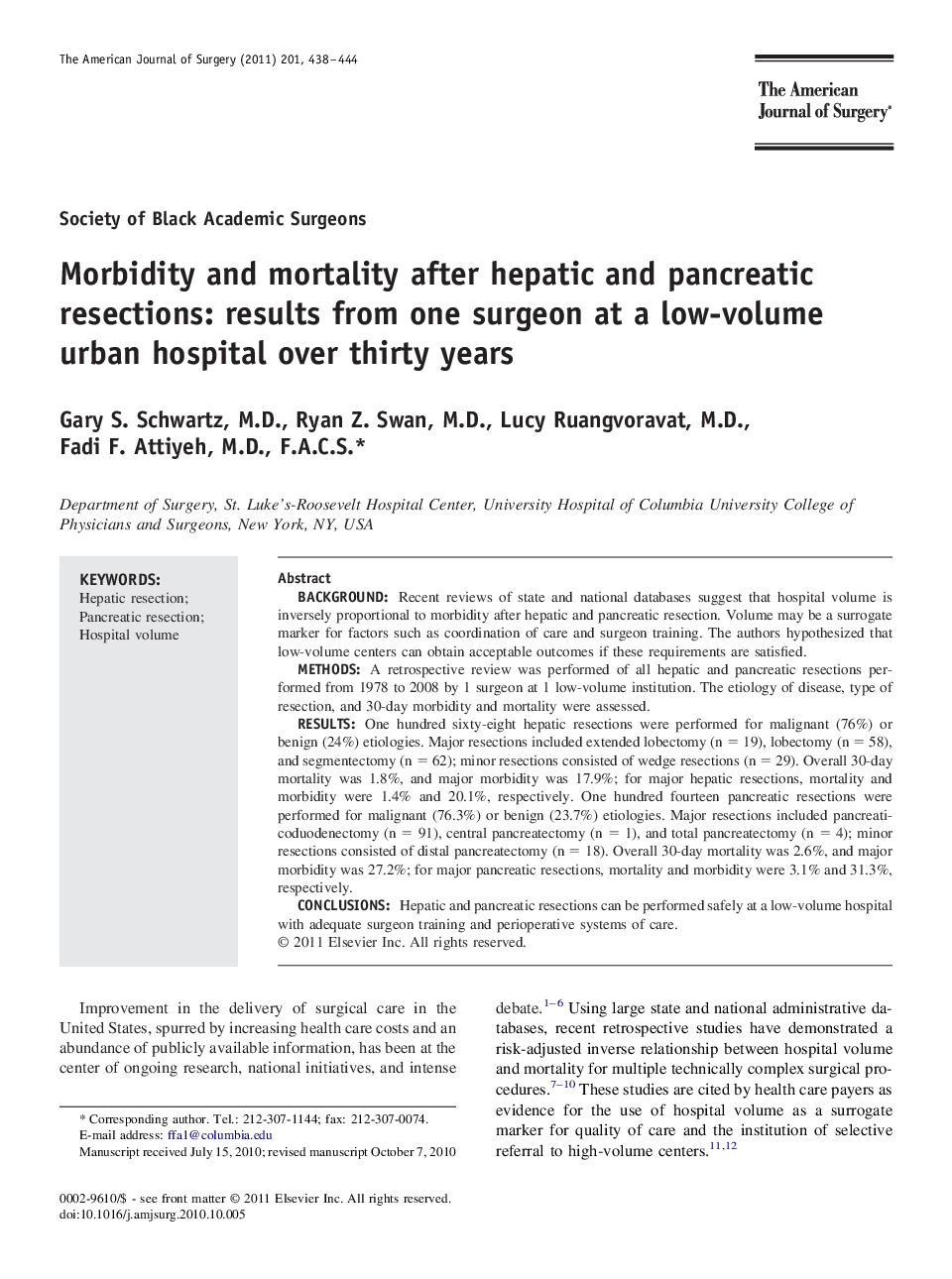| Article ID | Journal | Published Year | Pages | File Type |
|---|---|---|---|---|
| 4279475 | The American Journal of Surgery | 2011 | 7 Pages |
BackgroundRecent reviews of state and national databases suggest that hospital volume is inversely proportional to morbidity after hepatic and pancreatic resection. Volume may be a surrogate marker for factors such as coordination of care and surgeon training. The authors hypothesized that low-volume centers can obtain acceptable outcomes if these requirements are satisfied.MethodsA retrospective review was performed of all hepatic and pancreatic resections performed from 1978 to 2008 by 1 surgeon at 1 low-volume institution. The etiology of disease, type of resection, and 30-day morbidity and mortality were assessed.ResultsOne hundred sixty-eight hepatic resections were performed for malignant (76%) or benign (24%) etiologies. Major resections included extended lobectomy (n = 19), lobectomy (n = 58), and segmentectomy (n = 62); minor resections consisted of wedge resections (n = 29). Overall 30-day mortality was 1.8%, and major morbidity was 17.9%; for major hepatic resections, mortality and morbidity were 1.4% and 20.1%, respectively. One hundred fourteen pancreatic resections were performed for malignant (76.3%) or benign (23.7%) etiologies. Major resections included pancreaticoduodenectomy (n = 91), central pancreatectomy (n = 1), and total pancreatectomy (n = 4); minor resections consisted of distal pancreatectomy (n = 18). Overall 30-day mortality was 2.6%, and major morbidity was 27.2%; for major pancreatic resections, mortality and morbidity were 3.1% and 31.3%, respectively.ConclusionsHepatic and pancreatic resections can be performed safely at a low-volume hospital with adequate surgeon training and perioperative systems of care.
